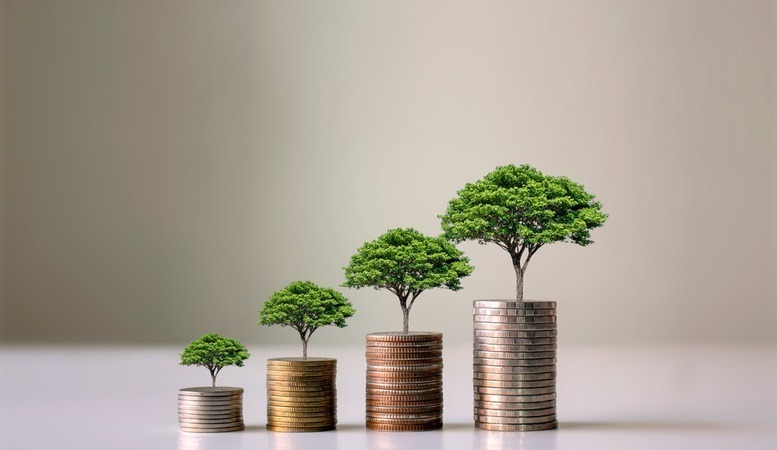As technology advances, the value of the rare earth metals keeps climbing. These 17 elements from the middle of the periodic table (atomic numbers 21, 39, and 57–71) have prominent uses in manufacturing smartphones, computers, batteries, magnets, and military equipment. While not rare in quantity, they are challenging to produce, making them valuable commodities in the global market.
Due to the increasing value and industrial demand for rare earth elements, more people are looking for investment opportunities. However, investing in rare earth metals comes with challenges and risks. Unlike most commodities, you can’t buy futures for rare earths, but there are other ways to gain exposure to the rare earth industry.
Keep reading to learn from the team at The Oxford Gold Group about the growing prominence of rare earth metals and how you can invest in their promising future.
The Rising Rare Earth Metals Industry
The demand for rare earth elements exploded in the 1960s with the invention of the first color television. One of the rare earths, europium, was a crucial material for creating color images. A mine in California, known as the Mountain Pass Mine, began rapidly producing europium, and the U.S. became the world’s largest producer of rare earths.
China entered the market in the 1980s and became the leading source of rare earths within the decade. The country’s mining industry sold the elements for extremely low prices, forcing U.S. companies like the Mountain Pass Mine to stop production since they could no longer make a profit.
By 2010, China accounted for 95% of the world’s production of rare earth elements. With its firm grip on the market, China began restricting its rare earth exports and caused prices to skyrocket. At this wake-up call, companies in the U.S., Australia, and Canada started to search for solutions as demand for rare earths showed no signs of slowing down.
Within a few years, mines in Australia and the U.S. began producing rare earth elements again. Production in other countries, such as Brazil, Malaysia, and Russia, also increased. By 2020, China was still the leading producer but held only 36% of the world’s rare earth reserves.
Types of Rare Earth Metals

Rare earth metals are a group of chemical elements you can find next to each other on the periodic table, including the 15 lanthanide elements, yttrium, and scandium. All the rare earths are metals with similar properties that lead them to appear in the same geologic deposits.
Despite their name, even the scarcest rare earth elements are more abundant than gold. The reason for their relatively low production is how tricky it is to mine them. Each deposit containing rare earth metals typically has low concentrations of valuable elements, making it difficult to mine them economically.
The metals (except for scandium) fit into two main categories: light and heavy.
Light Rare Earth Metals
The lightest rare earth elements (according to their atomic weight) include neodymium, praseodymium, europium, and lanthanum. The one in highest demand within the rare earths market is neodymium, which manufacturers use to make smartphones, electric vehicles, and medical equipment.
Praseodymium is also a significant resource for producing aircraft engines, studio lighting, and permanent magnets for data storage and wind turbines. Many light rare earth metals play critical roles in military defense manufacturing as ingredients for making night-vision goggles, guidance systems, communications, and stealth technology.
Heavy Rare Earth Metals
Heavy rare earth elements are less common, causing their prices to rise as demand overtakes the supply. These metals include dysprosium, terbium, yttrium, erbium, and samarium. The first three metals on the list are in high demand for manufacturing clean energy technologies, such as hybrid vehicles and medical devices.
Erbium’s primary use is in fiber-optic cables, making it possible for internet data to travel the world today. Dysprosium oxide helps keep nuclear reactors cool, and terbium is in TV screens and solid-state hard drives.
Scandium
Scandium appears in the same deposits as the other rare earth elements, but it doesn’t fall into the “heavy” and “light” categories. Because of its differences in properties, scandium is in a class by itself. The primary use of scandium in the U.S. is in aluminum-alloy sports equipment, semiconductors, and lighting.
The Risks of Investing in Rare Earth Metals
With such a long list of industrial applications, you might assume that rare earth metals are a safe bet due to their demand. However, the production is much lower than other mining operations: about 150,000 tons a year. Even with comparatively low production, most are in surplus supply.
Heavy rare earth metals are in higher demand since they are harder to find, but China has nearly exclusive production of these elements. Although companies in other countries are pursuing their own mining initiatives, they can take several years to become operational.
Relatively low and unstable supply and demand, combined with the scarcity, environmental impact of extraction and challenging purification process, make investing in rare earth metals risky. Not to mention that China controls enough of the market to dictate prices as its leaders see fit.
Rare earths’ prices are volatile, similar to other commodities like oil and gas. A beginner investor would find safer diversification opportunities in precious metals like gold, silver, and platinum.
How To Invest in Rare Earth Metals

Despite the risks, rare earth metals are valuable and in high demand across many industries. While purchasing physical stock of rare earth elements isn’t feasible, you can start investing in rare earth metals in a few different ways.
Mining Company Stocks
The most direct way you can begin investing in rare earth metals is through mining companies, most of which don’t have publicly-traded stocks. However, those with accessible stocks include:
- Neo Performance Materials (TSX: NEO)
- Freeport-McMoRan (FCX)
- Lynas Rare Earths (ASX: LYC)
- MP Materials Corp. (MP)
- Rare Element Resources (REEMF)
- Texas Mineral Resources Corp. (TMRC)
- Defense Metals Corp. (DFMTF)
Lynas Rare Earths, an Australian company, is one of the highest performing rare-earth producers outside of China. Most rare-earth mining ambitions fizzle out as companies struggle to find the funds while searching for higher concentrations of elements. Lynas mines rare earths in Australia and processes them in Malaysia and, recently, the United States.
In the U.S., MP Materials Corp. in the Mountain Pass Mine was once the leading producer of rare earth elements but went bankrupt in 2015. In 2020, the Department of Defense awarded the company an investment of $9.6 million to aid processing and separation capabilities.
Rare Earth Exchange-Traded Funds
Only a few options are available for investors looking for exposure through ETFs. The most popular and accessible mutual fund is the VanEck Vectors Rare Earth/Strategic Metals ETF (REMX). The fund focuses not only on investing in rare earth metals but also in strategic metals like cobalt and titanium. It includes leading companies such as China Northern Rare Earth Group and Lynas Rare Earth.
Another fund is the Dolefin Rare Earth Elements Fund in Switzerland, which invests in rare earth element companies and platinum group metals producers.
Rare-Earth Recycling Companies
Nations are looking for ways to reduce China’s hold on them by finding alternatives to mining rare earth elements. One of these ways is through recycling facilities, primarily for magnets. Companies such as American Resources Corp. (AREC) and Geomega Resources (GOMRF) are building sustainable rare earths facilities to convert waste into usable products for renewable energy and electric vehicles.
Are Rare Earth Elements a Good Investment?

Even though China still has a stranglehold on rare earth supply and production, experts are optimistic about the future of rare earth elements in terms of supply and demand.
In 2021, prices rose in response to political events such as the coup in Myanmar, with the price of yttrium increasing by 120%. The year also brought a major announcement from MP Materials: the opening of a magnet plant and a deal with General Motors.
Analysts predict that if the global chip shortage eases, certain rare metals should see a healthy increase in demand as automakers need them for catalytic converters. Additionally, as renewable energy technologies continue to grow in the U.S., Japan, South Korea, and other large consumers, their demand for rare earth elements should increase.
Since the industry is so complex and politically turbulent, investing in rare earth metals is not for the faint-hearted. For investors determined to get their foot in the door, experts recommend watching EV sales and other green energy statistics to get a read on the rare earths market.
Protect Your Future With Oxford Gold Group
Once you start investing, you might be eager to diversify your portfolio with metals. At Oxford Gold Group, we want to help educate you about your investment options. For personalized advice and information on investing in rare earth metals, contact us at 833-600-GOLD.








